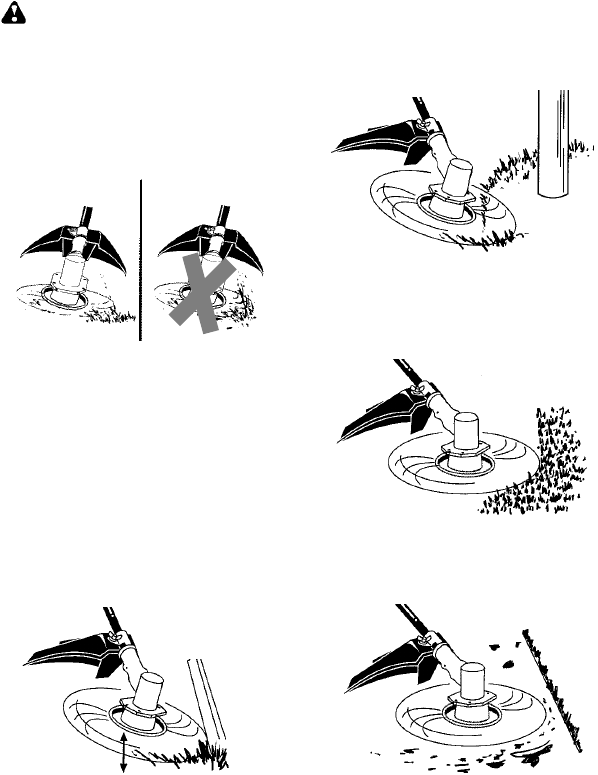
13
CUTTING METHODS
WARNING: Use minimum speed
and donot crowdthe linewhen cuttingaround
hard objects (rock, gravel, fence posts, e tc.),
whichcan dam agethetrimmer head,become
entangled in the line, or be thrown causing a
serious hazard.
S The tip of the line does the cutting. You will
achieve the best performance and mini-
mum line wear by not crowding the line into
the cutting area. The right and wrong ways
are shown below.
Tip o f t he line
does the cutting.
Right Wrong
Line crowded into
work area.
S The line will easily remove grass and
weeds fromaround walls,fences, treesand
flower beds, but it also can cut the tende r
bark of trees or shrubs and scar fences.
S For trimming or scalping, use less than full
throttle to increase line life and decrease
head wear, especially:
S During light duty cutting.
SNear objects aroundwhich the line can wrap
such as small posts, trees or fence wire.
S For mowing orsweeping, use fullthrottlefor
a good clean job.
TRIMMING -- Hold the bottom of the trimmer
head about 3 inches (8 cm) above the ground
and at an ang le. Allow onl y th e t ip of the line to
make contact. Do not force trimmer line into
work area.
Trimming
3 inches (8 cm)
above ground
SCALP ING -- The scalping technique removes
unwanted vegetation down to the ground. Hold
the bottom of the trimmer head about 3 in. (8
cm) above theground and at an angle. Allow the
tip of the line to strike the ground around trees,
posts, monumen ts, etc. This t echnique in-
creases line wear .
Scalping
MOWING -- Your trimmer is ideal for mowing
in places conventional lawn mowers cannot
reach. In the m owing position, keep the line
parallel to the ground. Avoid pressing the
head into the ground as this can scalp the
ground and damage the tool.
Mowing
SWEEPING -- The fanning action of therotat-
inglinecanbeusedto blowaway loosedebris
from an area. Keep the line parallel to and
above the area surface and swing the tool
from side to side.
Sweeping


















